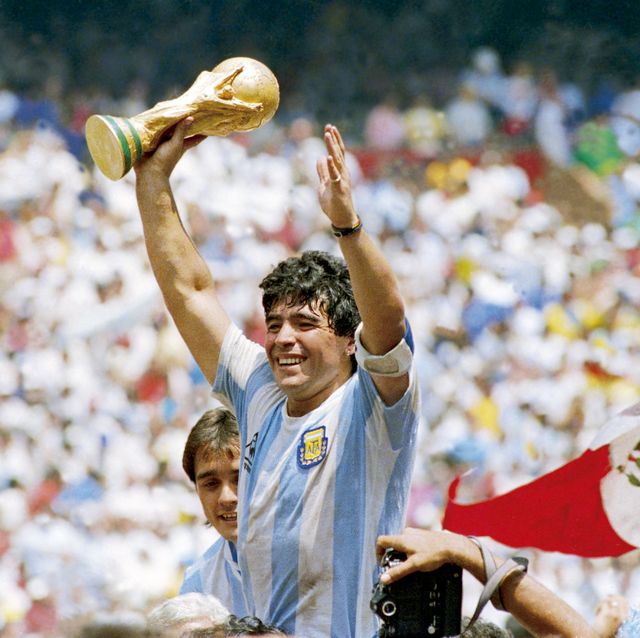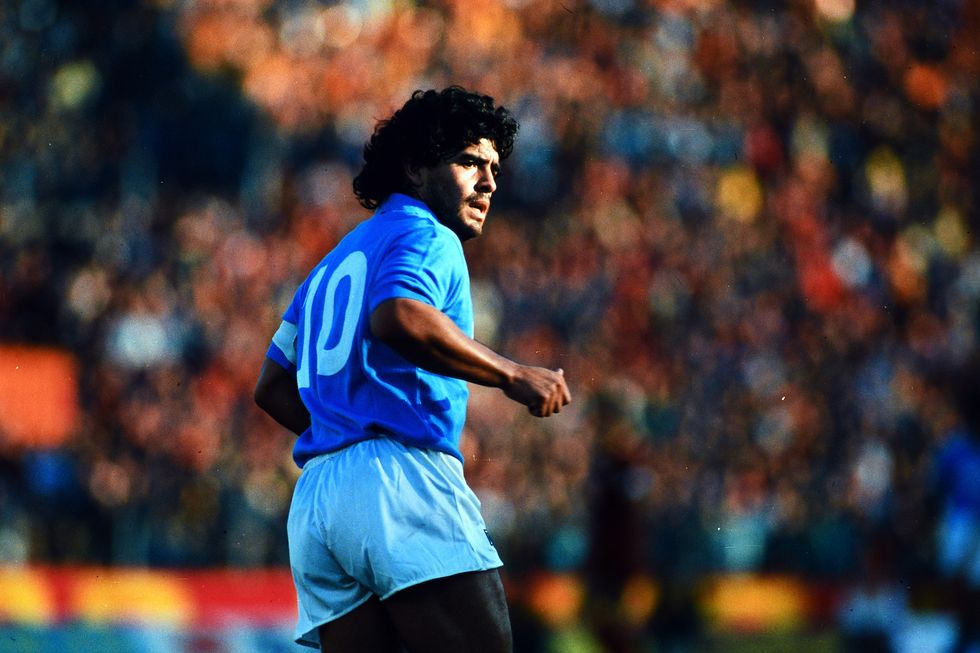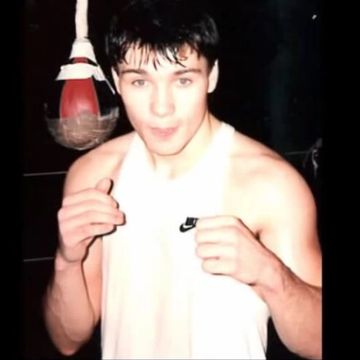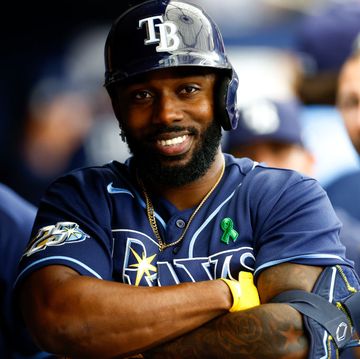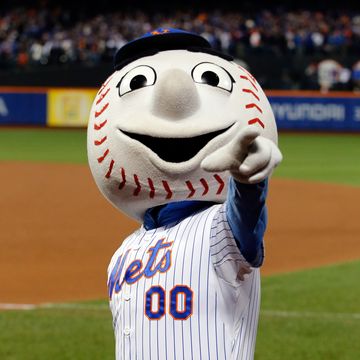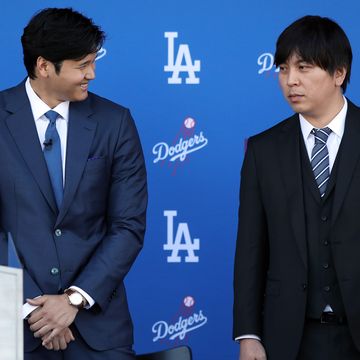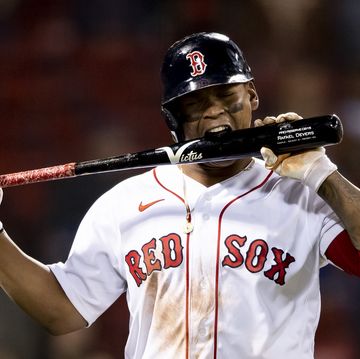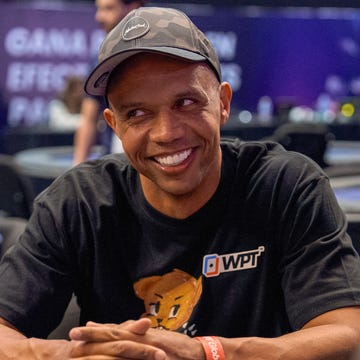In recent seasons, there has been a lot of talk in Naples about jersey numbers. The local club, SSC Napoli, has once again risen to prominence in Italian soccer, reclaiming its place among the great clubs of Europe thanks to a new generation of talent that includes Lorenzo Insigne, the local boy who came good. The forward is from Frattamaggiore, an ancient area of the tumultuous and hardscrabble city in the bottom half of the boot, and the club's fanatical fanbase thought he might be the one to finally put on the fabled number 10 shirt again. The number 10 is sacred on any team, reserved for the supreme creative, the player who can produce the moment of genius to win a game. But at Napoli, it is beyond any mere patron saint of goals and assists, some talented professional who will come and go. It is for the gods.
The last man to wear it, Diego Maradona, died on Wednesday at 60 years old, an early end to a life lived fast and hard, full of struggle and triumph and beauty and disaster. He was a prodigious talent, a bucking bull of a personality, a talisman for the working poor, a formidable abuser of narcotics. By the end of his career, he'd earned a place in the genuine pantheon of world athletes in the 20th century. Among footballers, his only rivals are Lionel Messi, Cristiano Ronaldo, and Pelé. No one else is in the zip code.
Maradona had what no one can teach: an innate and primal understanding of the physics of the game, how the ball moved through space, how it would glance onto his foot when he plucked a pass out of the air, how it would curve in its trajectory when he struck it at goal—with power, or with the deft precision of an outrageous chip. He was fast and powerful, yes, but as a dribbler, he enjoyed that same fundamental grasp of the physics of how other players moved around him, how to twist and turn to leave them in his wake, popping the ball over one and around another to get where he was simply destined to go. He evoked what his fellow Argentine, Lionel Messi, would come to decades later: the sense that you were watching the kid on the playground mazing his way through the others, except that he was up against the world's best defenders. He knew exactly what to do in every split second. He was born for this.
The proof of that was, as much as anything, in his ability to play at such a high level while living an increasingly reckless lifestyle. After a beef with the board at FC Barcelona, he moved to Napoli, where he steadily established himself as the greatest player of his era while, in later years, partying nonstop from the moment the final whistle blew on Sunday until halfway through the next week. In a remarkable documentary released last year, full of never-before-seen footage from behind the scenes, you can watch as he attempted to get himself back to fighting shape for the next game after a multi-day bender featuring rivers of booze and mountains of cocaine. It is a feat of human biology that, when it came time to play, he was nearly always the best player on the field. Until, eventually, the city began to turn on him—and so did the police. By the end, he was caught on tapped phones soliciting prostitutes and cocaine, was banned from Italian soccer for 15 months, and fled to his native Argentina in shame—where he was arrested on drug charges.
The collapse of his relationship with the city of Naples is among the most tragic elements of Diego Maradona, that 2019 film from Asif Kapadia, who also helmed the documentaries Senna and Amy. Maradona was more than just Napoli's greatest ever player. He was one of eight children born into desperate poverty in the slums of Buenos Aires, who worked his way to fame and riches in Europe only to be rejected by one of the world's very biggest clubs in Barcelona. So he made his way to Napoli, a city in Italy's poorer south struggling with economic desperation and mafia control, and became the kind of hero there that, in today's world of highly professionalized sports, is almost difficult to comprehend. In the San Paolo stadium, a gladiatorial arena full of subterranean tunnels that evokes the Coliseum, he was the people's champion.
In the film, you see Napoli travel to face Juventus in Torino, a city in the richer north. The Juventus fans—and those in Milan, too—would often chant that Neapolitans were too poor to shower—that they were dirty, undesirable, that they lacked clean water and were thus "Cholerasi," or suffering from cholera. In one of Maradona's first games, the Juventus supporters chanted, "wash them, wash them with fire"—a dual reference, incorporating the idea the city might be destroyed by nearby Mount Vesuvius. In the face of all this, there was Maradona, their champion. He led them, as captain, to their first Italian title in 1986-7. The scenes of celebration in the film make your average World Series street party look like afternoon tea. It was the slum kid who, through his extraordinary abilities, had given the people of Naples their dignity. And you wonder why no one has worn that number 10 since.
Strangely, though, Maradona may be best remembered—and his life and career most succinctly summarized—by one game against England in the 1986 World Cup quarterfinals. Maradona is one of the pantomime villains of English culture thanks to "the Hand of God," the most infamous handball in the history of soccer, in which Maradona carried the ball past a couple of English defenders and passed it off to a teammate only for it to get deflected haphazardly above the space between the back line and the goalkeeper. Maradona strode fluidly towards the flight of the ball, rose up, and knocked it past the keeper. It was only on the replay that the whole world saw without a doubt that he'd used his hand, but by then the goal had been allowed to stand. And that's where the English would prefer to leave things: cheated by a man who allowed the pursuit of victory at all costs, the ruthlessness of those Buenos Aires streets, to get the best of him. They'd like to leave it there because after that, Maradona scored the greatest goal of all time.
You will note that he picked the ball up behind the halfway line. And left five England players in his wake, usually on the ground. Before scoring and wheeling away to taste victory over a nation that just a few years earlier had stomped on Argentina in the Falklands War, one of the last major acts of British empire. At the time, Maradona was largely quiet in public about that aspect, but by his 2000 autobiography, he was unequivocal: "It was our way of recovering 'Las Malvinas,'" Maradona wrote, using the Argentine name for the Falklands. "It was more than trying to win a game. We said the game had nothing to do with the war. But we knew that Argentines had died there, that they had killed them like birds. And this was our revenge. It was something bigger than us: We were defending our flag." He'd cheated, but he'd also shown that he was better than everybody. Oh, and Argentina went on to win the 1986 World Cup.
But it was always bigger than the game itself, and so was Maradona. He seemed to be involved in a kind of titanic struggle with the world itself, with the great and powerful forces he had always seen as aligned against him, and which ultimately undid him with his own tragic assistance. Too often, he found it all too much to bear, and tried to shield himself from it with a lifestyle of self-destruction. But goddamn, he could play.
Jack Holmes is a senior staff writer at Esquire, where he covers politics and sports. He also hosts Unapocalypse, a show about solutions to the climate crisis.
